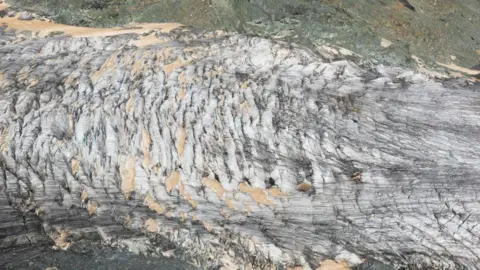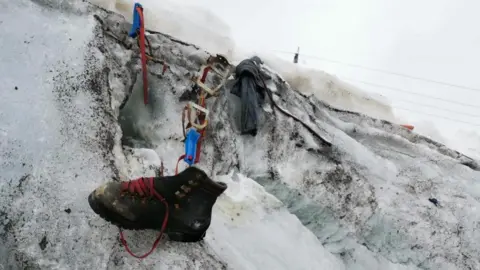Switzerland and Italy redraw border due to melting glaciers
Switzerland and Italy have redrawn part of their border in the Alps due to melting glaciers, caused by climate change.
Part of the area affected will be beneath the Matterhorn, one of Europe’s tallest mountains, and close to a number of popular ski resorts.
Large sections of the Swiss-Italian border are determined by glacier ridgelines or areas of perpetual snow, but melting glaciers have caused these natural boundaries to shift, leading to both countries seeking to rectify the border.
Switzerland officially approved the agreement on the change on Friday, but Italy is yet to do the same. This follows a draft agreement by a joint Swiss-Italian commission back in May 2023.
Statistics published last September showed that Switzerland’s glaciers lost 4% of their volume in 2023, the second biggest loss ever after 2022’s record melt of 6%.
An annual report is issued each year by the Swiss Glacier Monitoring Network (Glamos), which attributed the record losses to consecutive very warm summers, and 2022 winter’s very low snowfall. Researchers say that if these weather patterns continue, the thaw will only accelerate.
On Friday, Switzerland said that the redefined borders had been drawn up in accordance with the economic interests of both parties.
It is thought that clarifying the borders will help both countries determine which is responsible for the upkeep of specific natural areas.
Swiss-Italian boundaries will be changed in the region of Plateau Rosa, the Carrel refuge and Gobba di Rollin – all are near the Matterhorn and popular ski resorts including Zermatt.
The exact border changes will be implemented and the agreement published once both countries have signed it.
Switzerland says that the approval process for signing the agreement is under way in Italy.
 Getty Images
Getty ImagesLast year, Glamos warned that some Swiss glaciers are shrinking so fast that it is unlikely they can be saved, even if global temperatures are kept within the Paris climate agreement’s 1.5C target rise.
Experts say that without a reduction in greenhouse gases linked to global warning, bigger glaciers like the Aletsch – which is not on the border – could disappear within a generation.
 Swiss Police/Canton Valais
Swiss Police/Canton ValaisA number of discoveries have been made on Swiss glaciers in recent years due to their melting and rapid shrinking.
Last July, human remains found close to Matterhorn were confirmed to be those of a German climber missing since 1986.
Climbers crossing the Theodul glacier above Zermatt noticed a hiking boot and crampons emerging from the ice.
In 2022, the wreckage of a plane that crashed in 1968 emerged from the Aletsch glacier.
And the body of missing British climber Jonathan Conville was discovered in 2014 by a helicopter pilot who spotted something unusual while delivering supplies to a mountain refuge on the Matterhorn.



